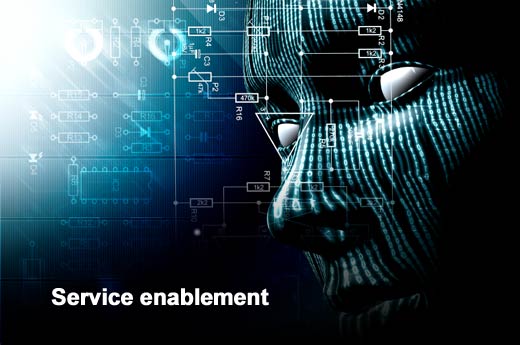According to Gartner, Internet of Things vendors will top $309 billion in direct revenue by 2020, with most of that money stemming from services.
While there are significant opportunities for the Internet of Things in the enterprise, challenges arise when translating data to legacy infrastructure technologies now being connected to the Internet. For the first time, vendors that supply equipment to the enterprise, including but not limited to smoke detectors, ATMs, trucks, and health care machines, are taking these devices online.
According to MachineShop, by service-enabling data sources, including devices and systems, organizations can create connected business solutions from any combination of the billions of things, applications and services in the global ecosystem of the Internet of Things.
This Internet of Services™ approach opens up a new, simpler and more extensible way in which connected devices, systems, applications and their data can be exposed and managed to create and monetize new business opportunities.
MachineShop is focused on the unique challenge of helping enterprises more simply engage with the connected world – particularly around systems and operational technology. MachineShop Services Exchange offers developers and organizations a simple way to interact with the hundreds and thousands of discrete APIs and services that allow them to build, integrate and manage the Internet of Services, including tools, reports, analytics and controls. MachineShop is a member of the Industrial Internet Consortium.
Click through for five ways organizations can take control and make the most of of the Internet of Things, making it an Internet of Services, as identified by MachineShop.
Deriving value from data
Enterprise IT has entered a new era in which data from operational systems has the potential to inform decisions within the enterprise and its entire ecosystem. However, most organizations are not well prepared to effectively extract and manage terabytes of data and derive business value from the flood of information from devices and systems on the network.
Forward thinking organizations must explore alternatives to the traditional time consuming, complex, and expensive ways of enabling that intelligence.
The API revolution
The API revolution is transforming the way solutions are built and integrated. This approach is disrupting the market for legacy middleware platforms, providing a simpler way to engage data generated by billions of physical things.
By extracting and managing information through API interfaces in a more flexible and efficient way, organizations will unlock significantly more business value from their systems and assets.
Service enablement
Beyond Internet enablement, organizations need service enablement. Marrying the adoption of APIs with standard, discrete, purpose-built services allows developers and their applications to leverage an increasing number of connected systems and related data sources.
This new services-driven model is fueling a major technological evolution, allowing businesses to rapidly create and monetize new offerings.
Focusing on the right data
Data is ultimately about information, events, decisions and actions. Developers and applications need to filter the noise and focus on information and events that drive decisions and actions. Management of this normalized data results in information and events that can be stored and enriched.
Data enrichment, business logic and advanced service management capabilities allow organizations to deliver additional value and further differentiate themselves.
Data integration
To take advantage of this new generation of connectivity and data, organizations need a new architecture that can seamlessly integrate data from operational technology (OT) systems with their backend informational (IT) counterparts.
There are few market opportunities that can be measured in trillions of transactions, but service-enabling the Internet of Things is one of them. Not only is the Internet of Services bigger than the sum of all the connected devices in the world, it’s more valuable financially to enterprises, developers, hardware vendors and ultimately to the consumers of all things connected.








